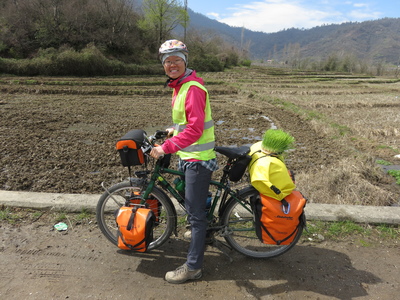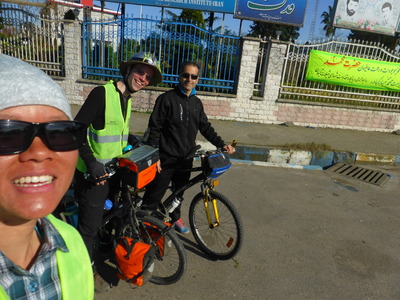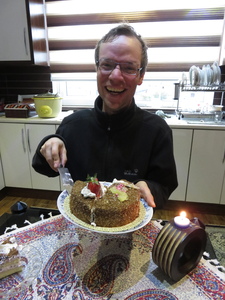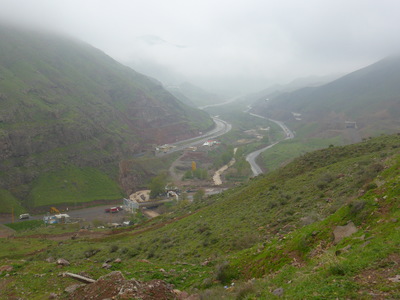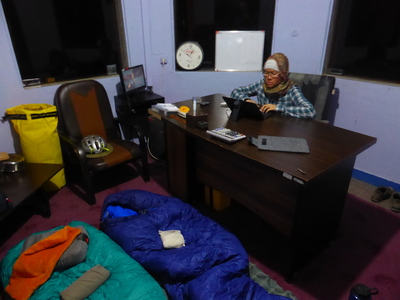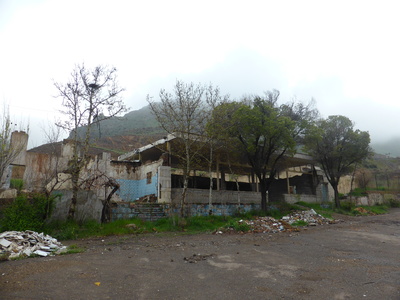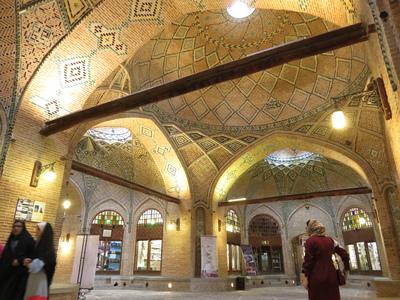Safari Park Iran
Posted on 2019-04-17
Entering any new country, the first thing we always need is the local currency. So far, we have been taking money from ATMs, but in Iran, credit cards cannot be used (as they are all American), and one needs to change money. This is not as straightforward as it sounds. There are two exchange rates: the official one and the free market rate. The official rate is decided by the government, and is the rate you get in banks. The free market rate, which is what you get in official exchange offices and on the street is about 3 times better than the official rate. Needless to say, we changed our money at the second market rate. However, that was not the end of our woes. The official currency is the Rial, but most people quote prices in Toman, where 1 Toman = 10 Rial. Given that even cheap items cost a few thousand Toman, some people leave out the thousands and say e.g. "30 Toman", when they mean 30 000 Toman = 300 000 Rial = ~2 Euro. Then our heads explode.
The northern part of Iran, along the Caspian Sea coast, is one of the most densely populated parts of the country, so there is usually a lot of traffic on the roads. Our first cycling day in Iran also happened to be the last day of Novruz, the Persian New Year. This day is also celebrated as Nature's Day, and almost everyone heads out of town to the parks, lakes, and forests for picnics. Because they all do this by car, the roads were even more crowded, and we cycled next to a never ending string of noisy cars that often sounded their horns to greet us. As a result, we couldn't enjoy nature that much on Nature's Day. Nevertheless, the landscape was quite beautiful, and the rice fields next to the steep, green mountains reminded us a bit of Southeast Asia.
Flooded rice fields and the Alborz mountains between Astara and Talesh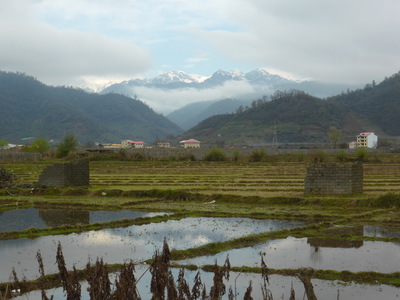
As we cycled into Bandar-e Anzali the next day, an Iranian cyclist met us at the outskirts of the city and started chatting with us. He invited us to his home, but since we had already arranged for a host through Warmshowers, we politely declined. He continued cycling with us as his home was in the same direction, and we introduced the Warmshowers website to him, to which he enthusiastically said that he would sign up. As we cycled together into town, he asked us more about our host, and whether we would recognise our host if we met him on the road. We clearly didn't, as it slowly dawned on us that he was actually our host, and we had been pranked! :O
We wanted to take a rest day in Anzali, but our host had other plans for us. He took us for a walk around the harbour in the city centre, and introduced us to all sorts of good (vegetarian) Iranian food. It was also Heiko's birthday, so we bought a big cake to share with his family!
From Anzali, we turned away from the Caspian sea to cross the Alborz mountain range. We took the road from Rasht to Qazvin, probably one of the busiest valleys across the mountains, with a freeway, an old road, and a new railway line running through it. We took the old road, which had fewer tunnels and less traffic, although most of the traffic was trucks, as these were not allowed on the freeway.
On our first night on this road, we wanted to camp in the Saravan forest, but were stopped at the guardhouse and told that it was not allowed. However, the friendly guards told us that we could sleep in their office instead, and we even joined them at night for a tour of the forest, as they drove through the park checking for errant campers.
On our third night on this road, we decided to camp in an abandoned building, as there was heavy rain forecasted that evening and night. The place seemed acceptable at first and we didn't really see any better option, but after we had set up our tent and the sun had set, we realised that there was light coming out of a window of a room that we had not noticed before! We stayed extra quiet in our dark corner that night and were never discovered, as our reclusive housemate never left the room, but Heiko was a bit paranoid until we left the next morning.
The next day started with the last bit of climb up the Alborz mountains and then a long, gentle descent onto the Iranian Plateau. Most of Iran is located on this plateau, at an elevation of about 1000m above sea level, and the landscape was noticeably drier once we crossed the mountains. The first town we reached was Qazvin, that surprised us with its beautiful architecture.
From Qazvin, we cycled our first >100km day to Karaj, a town on the outskirts of Tehran. We had heard that the traffic into Tehran is horrible, so we found a Warmshowers host in Karaj who was willing to store our bicycles and most of our luggage for a few days while we went into the city by metro. Our main purpose of going to Tehran was to apply for our Turkmenistan visas - we were often told that there were no major sights in Tehran, so we didn't allocate many days in the city. On hindsight, we could probably have spent a day or two more exploring this sprawling, busy, and dusty metropolis.
Azadi Tower, one of the landmarks of Tehran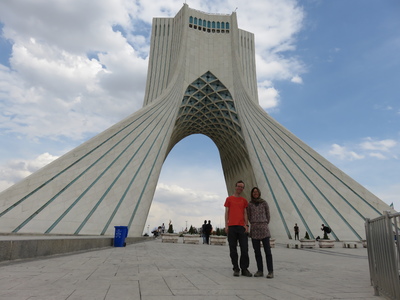
One recurring impression from our first 10 days in this country was of the overwhelming curiosity of the people, such that we often feel like we are in a safari park, where we are the wild animals roaming freely, and the visitors drive around in their cars, watching us, taking photos with us, and occasionally feeding us. While we enjoy most of the interaction, it does get a bit overwhelming at times, and we are starting to feel the need to hide in a cave hotel room once in a while to recharge.
